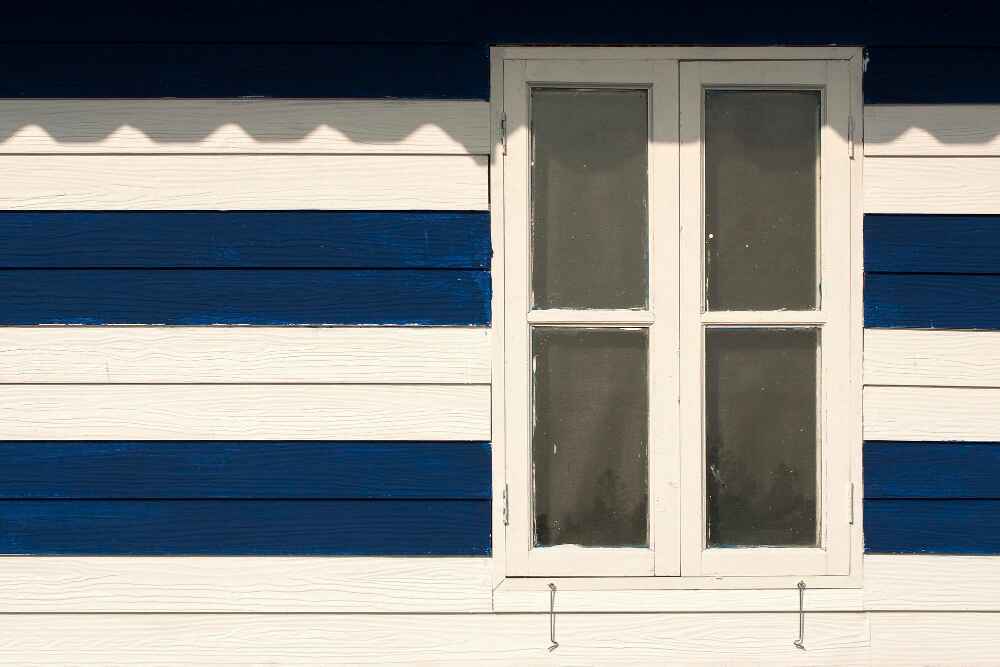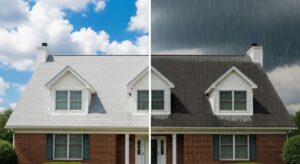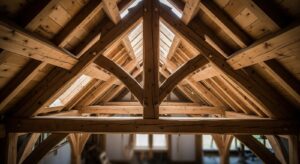Picture driving through your neighborhood and spotting that one house that makes you slow down and stare. You know the one – it has those distinctive vertical lines creating shadows and depth that somehow make the entire home look more expensive and sophisticated than everything around it. That’s the magic of board and batten vinyl siding, and it’s exactly why this classic exterior style has become the hottest trend in modern home design.
But here’s what most homeowners discover too late: choosing board and batten vinyl siding isn’t as simple as pointing to a pretty picture and saying “I want that.” Behind every stunning installation lies crucial decisions about styles, significant cost considerations, and installation complexities that can make or break your project’s success.
Whether you’re building your dream home or planning a major renovation, the choices you make about your exterior siding will impact your home’s appearance, value, and maintenance requirements for decades. This comprehensive guide cuts through the marketing fluff to give you the real insider knowledge you need about board and batten vinyl siding styles, actual costs you can expect, and professional installation tips that ensure your investment pays off beautifully.
Understanding Board and Batten Vinyl Siding: The Basics
Board and batten vinyl siding recreates the timeless appeal of traditional wood construction using modern vinyl materials that offer superior durability and lower maintenance. This siding style features wide vertical boards (the “boards”) with narrower strips (the “battens”) covering the seams, creating distinctive shadow lines that add architectural interest and visual depth to any home exterior.
The beauty of this design lies in its versatility and historical significance. Originally developed as a practical solution for frontier homes, board batten siding provided excellent weather protection while using readily available lumber efficiently. Today’s vinyl versions capture that same rustic charm while eliminating the maintenance headaches associated with natural wood.
Modern manufacturing techniques have transformed board and batten vinyl siding into a sophisticated exterior option that mimics wood grain textures, offers fade-resistant colors, and provides insulation benefits that improve energy efficiency. Unlike traditional wood siding that requires regular staining, painting, and repair, vinyl versions maintain their appearance for decades with minimal maintenance.
The vertical orientation of board and batten siding creates an illusion of height that makes homes appear taller and more stately. This visual effect works particularly well on ranch-style homes, Cape Cod designs, and modern farmhouse constructions where adding vertical emphasis enhances the overall architectural appeal.
Installation considerations differ significantly from horizontal siding options, requiring specific techniques to ensure proper water management and thermal expansion accommodation. Understanding these differences is crucial whether you’re planning a DIY project or working with professional contractors.
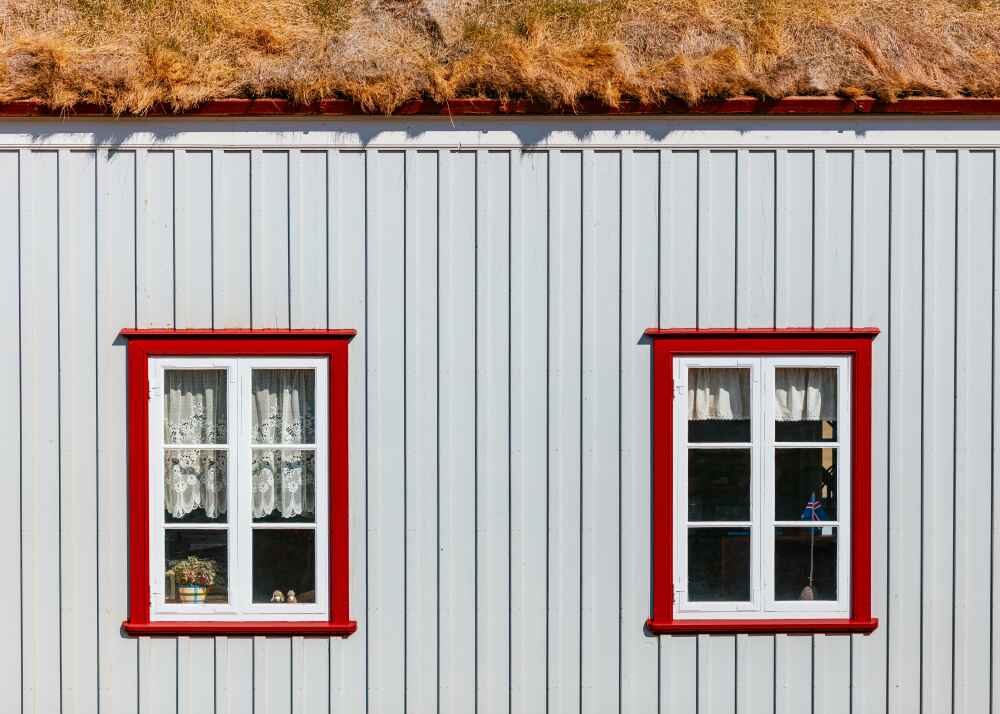
Popular Styles of Vertical Board and Batten Siding
The world of vertical board and batten siding offers numerous style variations, each creating distinct visual effects and serving different architectural purposes. Understanding these options helps you select the perfect match for your home’s design aesthetic and functional requirements.
Traditional Board and Batten features wide boards (typically 8-12 inches) with narrow battens (1-2 inches) covering the seams. This classic proportion creates bold shadow lines that work exceptionally well on larger homes or those seeking a prominent vertical emphasis. The substantial board width provides excellent coverage while maintaining the authentic proportions that made this style historically popular.
Reverse board and batten siding flips the traditional concept, featuring narrow boards with wide battens that create a different shadow pattern and visual rhythm. This variation offers a more contemporary interpretation while maintaining the vertical emphasis that defines the style. Reverse board and batten works particularly well on modern homes where subtle texture is preferred over bold shadow lines.
Board-on-board variations layer boards of different widths to create complex shadow patterns and increased dimensional depth. These designs often incorporate multiple board widths within the same installation, creating custom appearances that set homes apart from standard installations.
Mixed-width installations combine various board sizes within a single project, creating visual interest through varied proportions. This approach works well on larger homes where uniform board widths might appear monotonous or on architectural designs that benefit from varied visual rhythms.
Color coordination strategies play a crucial role in maximizing the visual impact of board and batten installations. Contrasting batten colors can emphasize the vertical lines, while matching colors create subtle texture without overwhelming the overall design. Some installations use multiple colors to highlight architectural features or create visual zones on complex home designs.
Board and Batten Exterior Siding Installation: Professional Tips
Successful board and batten exterior siding installation requires understanding unique techniques that differ significantly from horizontal siding projects. These professional insights can mean the difference between a beautiful, long-lasting installation and costly problems down the road.
Preparation fundamentals begin with ensuring proper wall sheathing and moisture barriers. Board and batten installations require flat, consistent surfaces to prevent wavy appearances and ensure proper batten alignment. Any irregularities in the wall surface will be magnified by the vertical installation, making thorough preparation crucial for professional results.
Starting point determination significantly impacts the final appearance and installation efficiency. Professional installers typically begin at the most visible corner and work systematically to ensure consistent spacing and alignment. Planning the layout to minimize cut pieces and ensure symmetric batten placement around windows and doors requires careful measurement and marking before installation begins.
Thermal expansion accommodation becomes critical with vinyl siding installations, particularly on large vertical runs. Vertical board and batten siding experiences thermal movement differently than horizontal installations, requiring specific techniques for fastening and overlapping that prevent buckling or separation during temperature changes.
Fastening techniques for board and batten differ from standard siding installation. Boards must be secured to allow for thermal movement while maintaining consistent alignment with adjacent pieces. Over-fastening or improper nail placement can cause buckling, warping, or cracking that compromises both appearance and weather protection.
Flashing and trim integration requires special attention around windows, doors, and other penetrations. The vertical orientation changes how water flows and requires modified flashing techniques to ensure proper drainage and prevent moisture infiltration behind the siding system.
Quality control checkpoints throughout installation help identify and correct issues before they become major problems. Regular measurement verification, alignment checks, and visual inspection ensure consistent results that meet professional standards.

Board and Batten Siding Cost: Complete Budget Breakdown
Understanding the true cost of board and batten siding requires examining multiple factors that influence both initial investment and long-term value. These detailed cost considerations help you budget accurately and make informed decisions about your siding project.
Material costs for board and batten vinyl siding typically range from $3.50 to $8.50 per square foot, depending on quality, brand, and specific style selections. Premium products with enhanced insulation, superior color retention, and extended warranties command higher prices but often provide better long-term value through improved performance and durability.
Labor installation costs generally run $4.00 to $8.00 per square foot for professional installation, with complexity factors significantly impacting final pricing. Homes with multiple stories, complex architectural details, or challenging access requirements typically fall toward the higher end of this range. The vertical installation process requires more precision than horizontal siding, often resulting in slightly higher labor costs.
Regional pricing variations can significantly impact total project costs, with labor rates varying by 30-50% between different markets. Urban areas typically command premium pricing due to higher labor costs and operating expenses, while rural markets may offer more competitive pricing but potentially limited contractor availability.
Project complexity factors that increase costs include extensive trim work around windows and doors, integration with existing architectural features, color matching requirements, and accessibility challenges. Homes requiring scaffolding, have multiple story heights, or need extensive preparation work will see higher total project costs.
Hidden cost considerations often surprise homeowners during project planning. These may include permit fees, disposal of existing siding, substrate repairs, electrical work around fixtures, and landscaping restoration after installation. Budgeting an additional 15-20% above quoted prices helps accommodate these unexpected expenses.
Long-term value analysis should factor in reduced maintenance costs compared to wood siding options. Board and batten vinyl siding typically requires only periodic cleaning and minor repairs over 20-30 year lifespans, while wood alternatives need regular staining, painting, and more frequent repairs that can total thousands of dollars over time.
Comparing Board and Batten Styles: Which is Right for Your Home?
Selecting the ideal board and batten style requires matching your home’s architectural character with your personal preferences and practical requirements. Each style variation offers distinct advantages and works better with certain home designs and regional aesthetics.
Traditional proportions work exceptionally well on colonial, farmhouse, and craftsman-style homes where authentic historical character is desired. The wide board, narrow batten configuration creates bold shadow lines that emphasize vertical elements and add substantial visual weight to the exterior design.
Contemporary interpretations like reverse board and batten siding suit modern and transitional home styles where subtle texture is preferred over dramatic shadow lines. These designs maintain vertical emphasis while creating more refined visual effects that complement clean, minimalist architectural approaches.
Color strategy considerations significantly impact the final aesthetic effect of different board and batten styles. Traditional installations often benefit from contrasting batten colors that emphasize the vertical pattern, while contemporary designs may use monochromatic schemes that create texture without overwhelming other design elements.
Scale relationships between your home’s size and the chosen board and batten proportions affect the overall visual impact. Larger homes can accommodate wider boards and more dramatic proportions, while smaller homes may benefit from more moderate sizing that doesn’t overwhelm the architectural scale.
Maintenance factor comparisons reveal that all vinyl board and batten styles offer similar maintenance advantages over wood alternatives, but color and texture choices can impact cleaning requirements and long-term appearance retention.
Resale value considerations suggest that traditional board and batten configurations often provide broader market appeal, while contemporary versions may attract specific buyer demographics but potentially limit market appeal in conservative regions.
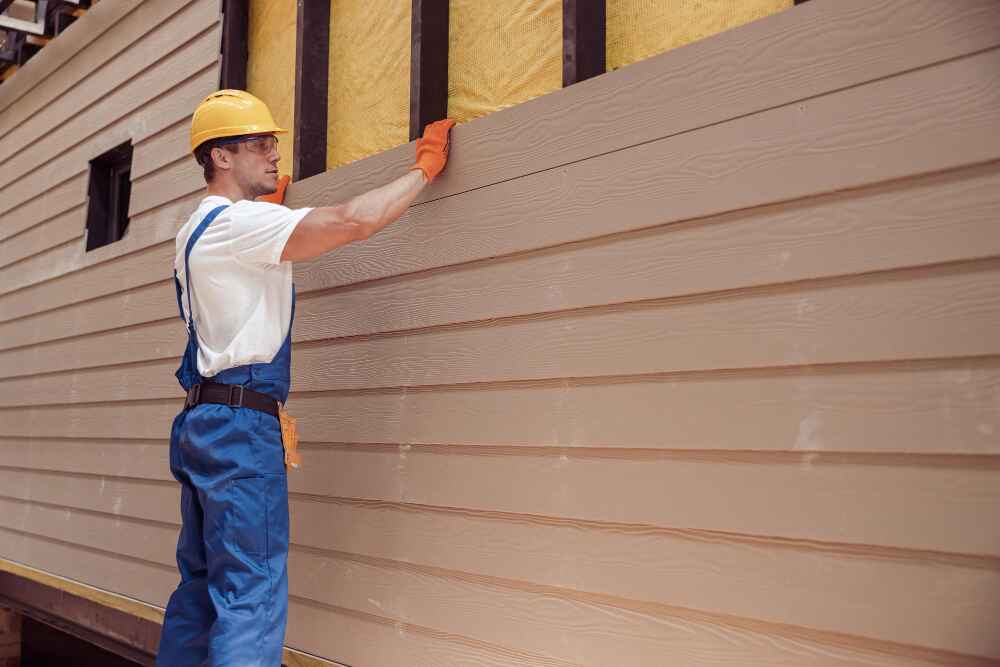
Installation Challenges and Solutions
Professional board and batten vinyl siding installation involves unique challenges that distinguish it from standard horizontal siding projects. Understanding these challenges and their solutions helps ensure successful project outcomes whether you’re planning DIY installation or working with contractors.
Alignment maintenance across long vertical runs presents the primary installation challenge. Unlike horizontal siding where each course can be independently adjusted, vertical installations require maintaining perfect alignment from foundation to roofline. Professional installers use laser levels and string lines to ensure consistent spacing and prevent the wavy appearance that results from accumulated alignment errors.
Corner treatments require special attention in board and batten installations. Outside corners need specially designed trim pieces or careful cutting and fitting to maintain the vertical line emphasis while providing proper weather sealing. Inside corners present different challenges, requiring precise cutting and flashing to prevent moisture infiltration.
Window and door integration becomes more complex with vertical siding installations. Maintaining consistent board spacing while accommodating trim work around openings requires careful planning and often custom cutting. Professional installations typically use detailed layout drawings to plan these transitions before beginning installation.
Thermal expansion management requires understanding how vinyl siding moves with temperature changes and adjusting installation techniques accordingly. Vertical installations experience different expansion patterns than horizontal siding, requiring modified fastening techniques and expansion gaps to prevent buckling or separation.
Weather protection strategies during installation become crucial for vertical siding projects. The installation process typically takes longer than horizontal siding, requiring weather-resistant temporary protection and careful scheduling around weather conditions.
Quality assurance protocols help identify and correct problems before they become major issues. Regular measurement verification, visual inspection from multiple angles, and systematic checking of fastener placement ensure professional results that will perform well long-term.
Maintenance and Longevity: Maximizing Your Investment
Board and batten vinyl siding offers significant maintenance advantages over traditional wood alternatives, but proper care and maintenance practices maximize both appearance retention and lifespan performance. Understanding these requirements helps protect your investment and maintain your home’s curb appeal.
Routine cleaning protocols for vinyl board and batten siding involve more than simple hosing down. The vertical orientation and shadow-creating design can trap dirt and organic growth in ways that require specific cleaning techniques. Annual cleaning with appropriate cleaners and soft-bristle brushes maintains appearance and prevents long-term staining or discoloration.
Inspection schedules should include semi-annual visual assessments focusing on fastener integrity, alignment maintenance, and any signs of thermal stress or impact damage. Early identification of minor issues prevents more extensive repairs and maintains the siding system’s weather protection capabilities.
Preventive maintenance tasks include ensuring proper drainage around the foundation, maintaining landscaping clearances that prevent moisture retention, and addressing any caulking or trim issues before they allow water infiltration behind the siding system.
Repair techniques for minor damage typically involve individual board replacement rather than extensive patch work. Understanding proper removal and installation techniques helps homeowners address small issues promptly before they require professional intervention.
Performance monitoring over time helps identify any systemic issues or areas requiring attention. Documenting the installation date, warranty information, and maintenance activities creates valuable records for future reference and potential warranty claims.
Upgrade opportunities may arise over time as new products or techniques become available. Understanding compatibility issues and installation requirements helps evaluate whether improvements or updates make financial sense for your specific situation.
Regional Considerations and Climate Factors
Board and batten vinyl siding performance varies significantly across different climate zones, making regional considerations crucial for material selection and installation planning. Understanding these factors helps ensure optimal performance and longevity in your specific location.
Temperature extremes affect vinyl siding differently than wood alternatives, with thermal expansion and contraction requiring specific installation techniques. Regions with significant temperature variations need enhanced expansion accommodation and may benefit from premium vinyl formulations designed for extreme climate performance.
Moisture management becomes critical in high-humidity regions or areas with significant rainfall. The vertical orientation of board and batten siding changes drainage patterns compared to horizontal installations, requiring modified flashing techniques and careful attention to moisture barrier details.
Wind resistance considerations vary by region, with high-wind areas requiring enhanced fastening techniques and potentially upgraded material specifications. Coastal regions may need additional corrosion-resistant hardware and enhanced UV protection to maintain appearance and performance.
UV exposure affects color retention and material longevity, particularly in southern regions with intense sun exposure. Premium vinyl formulations with enhanced UV stabilizers from manufacturers like CertainTeed provide better long-term performance in these challenging conditions.
Freeze-thaw cycles in northern climates create unique stresses on siding systems, requiring installation techniques that accommodate ice formation and thermal cycling without compromising weather protection or appearance.
Local building codes may specify particular requirements for siding installations, wind resistance ratings, or energy efficiency standards that impact product selection and installation techniques.
Cost Comparison: Board and Batten vs. Other Siding Options
Understanding how board and batten siding costs compare to alternative exterior materials helps make informed decisions about your home improvement investment. This comprehensive cost analysis examines both initial expenses and long-term value considerations.
Initial cost comparisons show board and batten vinyl siding typically costs 15-25% more than standard horizontal vinyl siding due to specialized manufacturing and installation requirements. However, this premium pricing still positions vinyl board and batten significantly below wood alternatives while offering superior durability and lower maintenance requirements.
Wood board and batten alternatives can cost 40-70% more than vinyl versions when factoring in material costs, installation complexity, and immediate finishing requirements. Cedar board and batten, while offering authentic natural beauty, requires immediate staining or sealing and ongoing maintenance that adds thousands to long-term ownership costs.
Fiber cement board and batten provides another alternative with costs typically 20-40% higher than vinyl options. While offering excellent durability and authentic appearance, fiber cement requires professional installation and periodic painting that impacts long-term value calculations.
Maintenance cost projections over 20-year periods show vinyl board and batten requiring minimal expense beyond occasional cleaning and minor repairs. Wood alternatives typically need refinishing every 3-5 years at costs ranging from $3,000-8,000 per treatment, depending on home size and local labor rates.
Energy efficiency considerations can impact long-term value through reduced heating and cooling costs. Insulated vinyl board and batten systems provide thermal benefits that may qualify for energy efficiency rebates while reducing utility expenses over the system’s lifetime.
Resale value impact studies suggest quality board and batten installations typically provide 70-80% return on investment through improved curb appeal and reduced maintenance appeal to potential buyers.
Frequently Asked Questions About Board and Batten Vinyl Siding
What is the difference between board and batten and reverse board and batten siding? Traditional board and batten features wide boards with narrow battens covering seams, creating bold shadow lines. Reverse board and batten siding uses narrow boards with wide battens, creating a more subtle contemporary appearance with different shadow patterns and visual rhythm.
How much does board and batten vinyl siding cost per square foot installed? Total installed costs typically range from $7.50 to $16.50 per square foot, including materials and professional labor. Factors affecting pricing include product quality, installation complexity, regional labor rates, and project-specific requirements like extensive trim work or multi-story installation.
Can I install board and batten vinyl siding myself? While DIY installation is possible for experienced homeowners, vertical board and batten siding requires precise alignment, specialized tools, and knowledge of thermal expansion techniques. Most homeowners benefit from professional installation to ensure proper performance and warranty coverage.
How long does board and batten vinyl siding last? Quality vinyl board and batten siding typically lasts 20-30 years with minimal maintenance, significantly outperforming wood alternatives that may need replacement in 15-20 years. Premium products often include warranties extending 30-40 years with proper installation and maintenance.
What maintenance does board and batten vinyl siding require? Maintenance requirements include annual cleaning with mild detergent and water, periodic inspection for damage or loose fasteners, and prompt attention to any issues. Unlike wood siding, vinyl versions don’t require painting, staining, or sealing.
Does board and batten siding work on all home styles? Vertical board and batten siding works well on most architectural styles but is particularly suited to farmhouse, colonial, craftsman, and contemporary designs. The vertical emphasis can make homes appear taller and more stately, though proportion considerations matter for smaller structures.
How does board and batten siding perform in extreme weather? Quality vinyl board and batten siding performs excellently in various weather conditions when properly installed. The vertical orientation provides effective water management, while modern vinyl formulations resist UV damage, thermal cycling, and impact damage better than traditional wood alternatives.
Advanced Installation Techniques for Professional Results
Achieving professional-quality results with board and batten vinyl siding requires mastering advanced techniques that go beyond basic installation knowledge. These insider secrets ensure long-lasting performance and stunning visual appeal.
Substrate preparation involves more than ensuring flat surfaces. Professional installers evaluate and address any structural issues, install appropriate moisture barriers, and verify proper insulation integration before beginning siding installation. This foundation work directly impacts long-term performance and appearance retention.
Layout optimization requires understanding how board spacing affects the overall visual impact and planning installations to minimize cut pieces around windows, doors, and architectural features. Professional installers use detailed drawings and measurements to optimize spacing and ensure symmetric appearances.
Fastening precision involves understanding proper nail placement, penetration depth, and spacing requirements that accommodate thermal movement while maintaining weather protection. Over-fastening or improper placement can cause buckling, while under-fastening may result in wind damage or alignment issues.
Trim integration requires coordinating board and batten installation with window trim, corner treatments, and architectural details. Professional techniques ensure weather-tight installations that maintain the vertical line emphasis while providing proper drainage and thermal accommodation.
Quality control systems used by professional installers include regular measurement verification, alignment checks, and systematic inspection protocols that catch and correct issues before they become visible problems or compromise performance.
Maximizing Curb Appeal with Design Integration
Board and batten vinyl siding offers numerous opportunities to enhance your home’s curb appeal through thoughtful design integration and strategic implementation. Understanding these design principles helps achieve maximum visual impact from your siding investment.
Color coordination strategies extend beyond simple siding color selection to include coordination with roofing, trim, windows, doors, and landscaping elements. Professional designers often use board and batten as an accent feature combined with other siding materials to create visual interest and architectural definition.
Proportion considerations involve matching board and batten scale to your home’s architectural character and size. Larger homes can accommodate bolder proportions, while smaller structures may benefit from more moderate sizing that enhances rather than overwhelms the existing architecture.
Accent applications can provide board and batten benefits without full-house installation costs. Using vertical board and batten on gables, dormers, or architectural features creates visual interest while maintaining cost control and design flexibility.
Lighting integration can dramatically enhance board and batten’s shadow-line effects during evening hours. Strategic landscape lighting or architectural accent lighting emphasizes the vertical patterns and adds sophisticated nighttime curb appeal.
Landscaping coordination helps frame and complement board and batten installations. Vertical elements in landscaping can echo the siding’s vertical emphasis, while horizontal elements provide visual balance and contrast.
Conclusion: Transform Your Home with Board and Batten Vinyl Siding
Board and batten vinyl siding represents one of today’s most compelling exterior upgrade options, combining timeless architectural appeal with modern performance and durability. From the classic charm of traditional proportions to the contemporary sophistication of reverse board and batten siding, this versatile exterior solution offers something for every home style and personal preference.
The investment you make in quality board and batten vinyl siding pays dividends through enhanced curb appeal, reduced maintenance requirements, and improved energy efficiency. While the initial costs may exceed basic siding options, the long-term value through durability, low maintenance, and strong resale appeal makes this upgrade one of the smartest home improvement investments you can make.
The key to maximizing your board and batten siding investment lies in understanding the various style options, realistic cost expectations, and proper installation requirements. Whether you choose traditional wide-board configurations or contemporary reverse board and batten designs, success depends on matching the right product to your home’s architecture and ensuring professional-quality installation.
Remember that board and batten exterior siding installation requires specialized knowledge and techniques that differ significantly from horizontal siding projects. While ambitious DIYers can tackle smaller projects, most homeowners benefit from professional installation that ensures proper performance, maintains warranty coverage, and delivers the stunning visual results that make this investment worthwhile.
Ready to transform your home’s exterior with stunning board and batten vinyl siding? Contact local siding professionals for detailed quotes and design consultations that help you explore the possibilities for your specific home. With proper planning, quality materials, and expert installation, your board and batten siding project will provide decades of beauty, protection, and value that you’ll enjoy every time you come home.
Don’t let another season pass wondering “what if” – take the first step toward your dream exterior today and discover how board and batten vinyl siding can transform your home into the neighborhood showpiece you’ve always envisioned.

